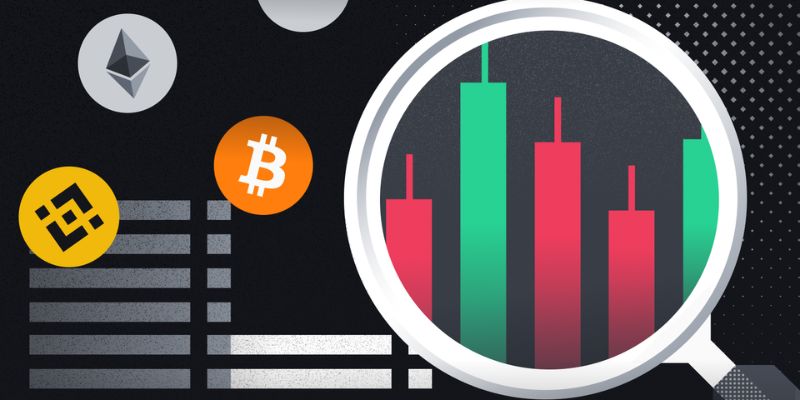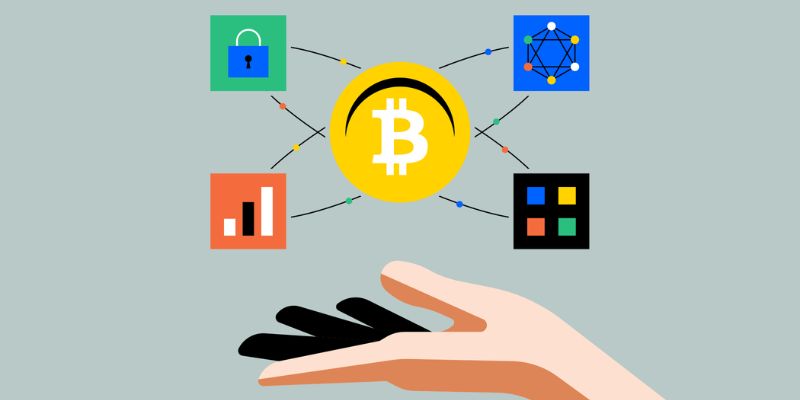Dive headfirst into the complex world of crypto trading and it’s clear: fees can eat your profits for breakfast. But fear not! I’m here to hand you a flashlight to peer into the shadowy corners of exchange costs. Armed with tips for calculating the true cost of trading on a crypto exchange, you’ll uncover every hidden fee. Say goodbye to unwelcome surprises on your trading journey. This guide shines a light on everything, from sneaky withdrawal fees to the subtle sway of market dynamics. Get ready to trim the fat from your transactions and trade with confidence!
Understanding the Various Fee Structures of Crypto Exchanges
Maker and Taker Fees Explained
When you trade on a crypto exchange, you deal with maker and taker fees. Makers are traders who add orders to the exchange’s order book, waiting for someone to match them. They make the market more liquid. Takers fill orders placed by makers. They take liquidity away. Exchanges charge makers less since they help the market. Takers usually pay more.
Trading is not just buying and selling as you may think. Each trade has a maker and a taker. Picture it like a dance. One person asks, the other responds. That’s how trading moves. And with every dance, there’s a tiny fee. Know these fees well. They impact your trading costs.
Withdrawal and Network Fees: A Comprehensive Look
Withdrawal and network fees are other costs that bite into your crypto. These depend on the coin you’re using and the congestion on the network. Withdrawal fees are what an exchange charges when you take out your digital currencies. Check these before moving your coins. Each exchange sets its fees; some are high, others low.
Network fees are different. They go to the miners or validators who keep the blockchain running. They vary, often with how busy the network is. When many people trade, fees can jump. A busy day can mean higher costs to move your coins.
Knowing these fees is key to trading smart. Hidden charges in crypto trading can sneak up on you. Be keen. Look at fee tables on exchange sites. Compare what they charge for both maker and taker, and withdrawal. This helps avoid unwanted surprises. Learn this, and you can save money on each trade. Keep more of your crypto profits.
The Influence of Market Dynamics on Cryptocurrency Trading Costs
Calculating Trading Volume Impact and Slippage
When you trade crypto, the price can change fast. This change is called slippage. It happens when a trade order affects the price. Big orders can change the price more. High trading volume can lower slippage. That means your trade is more likely to happen at the price you expect. Think about it like this: If you’re at a crowded market, it’s hard to move fast. But in a less crowded place, you can zip through with ease.
With lots of people trading, the market is strong. Your trade blends in. No waves made. But when fewer people trade, your order might push the price up or down. That’s slippage. You end up buying high or selling low. The impact? You could pay more or get less money back.
Effect of Liquidity and Spread Costs on Your Transactions
Now let’s talk liquidity. It’s how quickly you can buy or sell something without changing its price. Good liquidity means easy trading. Poor liquidity? Expect harder trades. The spread is the gap between buying and selling prices. This gap can eat into your funds.
Think of liquidity like a fruit stand. If there’s a ton of fruit, you can buy what you want easily. If there’s not much fruit, it’s harder to find what you want, and it might cost more. The spread is like the difference between what you pay for an apple and what the seller paid. If that gap is big, your apple is costly.
In crypto, high liquidity can make the spread smaller. That means you save money on each trade. Before trading, peek at the market. See how the orders stack up. This way, you spot the spread and gauge liquidity. If it looks dry, maybe wait for a wave of activity. This waiting can help dodge extra costs.
By understanding how these pieces fit together, you can smartly plan your trade times. You can spot when the market is busy or quiet. It’s not just about jumping in. It’s about timing your jump to land just right. With brains and a keen eye, you can trade while keeping costs down. Don’t let the market dynamics play you. Play the dynamics to win your trade game.
Strategic Considerations for Minimizing Cryptocurrency Exchange Costs
Utilizing Cost-Effective Crypto Trading Strategies
To cut costs, savvy traders plan each move. They know each trade eats a chunk of their cash. So, they trade less often, picking just right times. They dodge high traffic hours to avoid price slips. This is key! High volume means less price movement. A calm market means your trade is more likely to happen at your price, saving cash.
You must get maker and taker fees. Being a maker, you add orders to the market, often paying less. As a taker, you fill orders fast, but it may cost more. So, try to make orders. It can save you fees over time. Every little bit helps! Next, watch out for withdrawal fees. Crypto exchanges charge them for taking out your digital coins. Check these fees before you move money off the platform.
Learning about exchange rates in crypto also matters. Did you know? A bad rate can cost you, just like a high fee. Some exchanges use rates that make them more money. That’s a hidden charge you can avoid. Look for the best rates before you trade.
Evaluating the Benefits of Tiered Fee Structures and Exchange Tokens
Now, about tiered fee structures. These can give you lower fees if you trade a lot. The more you trade, the less you pay. Simple, right? But you must trade quite a bit to get into lower tiers. Know where you stand. Don’t pay more than you need to.
Exchange tokens can be a game changer. Some offer lower fees if you use their coin. It’s like having a coupon for your trades. Also, some even offer cash back, like a reward for using their token. Do the math. See if it makes sense for you. If it does, those tokens could be your ticket to lower fees.
Always think about what you’re paying in fees. Understanding these tricks can save you a bundle in crypto. Don’t let hidden charges eat your cash. Stay sharp! Remember, every dollar saved in fees is a dollar more you can invest.
Navigating Additional Costs and Tax Implications in Crypto Trading
Crypto Trading Tax Implications and Measuring ROI
Dealing with taxes is a must in crypto trading. Every trade can bring a tax hit. So, you have to track every deal. This way, you see your real profit. Your ROI, or return on investment, tells you if you’re winning or losing. You get it by figuring out your gains minus your costs and taxes. If taxes scare you, use tax software. It helps automate the grunt work.
For US traders, the IRS sees crypto as property. This means you pay taxes on gains. Let’s say you bought bitcoin for $5,000. Later, you sell it for $10,000. Here, your gain is $5,000. You will pay taxes on this money. Always record your trades. And don’t forget to include fees in your cost base. This will make your tax work much easier.
Annual Costs of Crypto Portfolio Management and Hidden Charges Exploration
Now, let’s talk about yearly costs and sneaky charges. Crypto exchange fees can eat into your money. Transaction costs on cryptocurrency platforms may seem small. Yet, over time, they add up. Keep an eye out for hidden charges in crypto trading too. Make sure you know about all fees. Even small ones matter.
Maker and taker fees are part of each trade. Being a maker, you add to the market. Your fees are often less. As a taker, you match with an existing order. Your fees might be higher. Don’t forget withdrawal fees for digital currencies. They vary for each platform and coin.
Understanding exchange rates in crypto is key too. Rates change fast. They can shift while you’re trading. Gas fees in cryptocurrency trading are another cost. They’re what you pay to make transactions happen. They can go up when the network is busy.
Keeping these in mind can help you manage your portfolio without surprises. Remember, always stay informed. Fees, taxes, and managing costs are part of trading. But by being smart, you can keep more of your money.
We dug deep into crypto exchange fees and how the market shapes trading costs. Remember, knowing the fees like “maker and taker” is key. Don’t forget the bite that withdrawal and network fees take from your wallet. Your trading volume and the market’s mood affect what you pay, with stuff like slippage and liquidity making a real difference.
Crafty trading moves and smart fee plans can save you cash. Also, exchange tokens might help cut costs down. But trading isn’t just about fees; taxes and other sneaky charges can hit your returns. Keep an eye on them yearly to stay sharp.
To ace crypto trading, get the full picture — fees, market tricks, strategic smarts, and hidden costs. With this know-how, you can trade smarter, save money, and aim for top-notch results. Stay ahead, trade wise!
Q&A :
How do I determine the true cost of trading on a crypto exchange?
When calculating the true cost of trading on a crypto exchange, consider not only the trading fees which may vary depending on the exchange but also additional expenses like withdrawal fees, deposit fees, and any network fees associated with your specific cryptocurrency. Spread, which is the difference between the buy and sell price, can also impact the cost. It’s important to review the exchange’s fee structure carefully and consider the total cost of completing a trade, from purchase to withdrawal.
What hidden fees should I watch out for on crypto exchanges?
Crypto traders should be vigilant for hidden fees such as inactivity fees, fees for fiat deposits and withdrawals, and fees for using certain payment methods. Some exchanges might also charge for additional services like token conversion or access to advanced trading tools. Always check the exchange’s full fee schedule to avoid any surprises.
Can the fluctuating value of cryptocurrencies affect trading costs?
Yes, the volatile nature of cryptocurrencies means that the value of your trades can fluctuate significantly. This volatility affects the spread and can ultimately impact the cost of trading. Rapid changes in price can affect the transaction when the order is placed versus when it is executed, which is something to be aware of when calculating the realistic costs of trading.
How do exchange liquidity and trading volume impact fees?
Exchange liquidity and trading volume can significantly impact trading costs. High liquidity and volume can lead to lower spreads and potentially lower trading costs, as there is more competition among traders. Conversely, lower liquidity might result in higher costs due to wider spreads. Some exchanges may also use a tiered fee structure based on trading volume, with high-volume traders benefiting from lower fees.
Is it more cost-effective to use a decentralized or centralized crypto exchange?
The cost-effectiveness of using a decentralized (DEX) versus a centralized exchange (CEX) depends on several factors, including transaction fees, network fees, and personal trading preferences. DEXs typically offer users more control over their funds and can have lower fees since they don’t have central authority overheads. But, they may also involve higher network fees and require a gas fee for transactions. CEXs often provide more user-friendly platforms with higher liquidity, but they may charge higher trading fees. Traders should compare both types of exchanges to determine which best meets their needs and offers the most cost-effective solution for their trading style.



